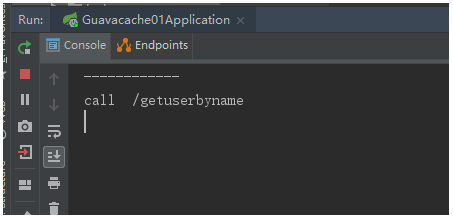缓存解决方案 - 技术专题 -Caffeine Cache

内容简介:
Google Guava Cache是一种非常优秀本地缓存解决方案,提供了基于容量,时间和引用的缓存回收方式。基于容量的方式内部实现采用LRU算法,基于引用回收很好的利用了Java虚拟机的垃圾回收机制。
其中的缓存构造器CacheBuilder采用构建者模式提供了设置好各种参数的缓存对象,缓存核心类
LocalCache里面的内部类Segment与jdk1.7及以前的ConcurrentHashMap非常相似,都继承于ReetrantLock,还有六个队列,以实现丰富的本地缓存方案。
1.1 关于Caffeine Cache
通俗的讲,Guava是google开源的一个公共java库,类似于Apache Commons,它提供了集合,反射,缓存,科学计算,xml,io等一些 工具 类库。cache只是其中的一个模块。使用Guava cache能够方便快速的构建本地缓存。
Caffeine是使用Java8对Guava缓存的重写版本 ,在Spring Boot 2.0中将取代Guava。如果出现Caffeine,CaffeineCacheManager将会自动配置。
1.1.1 为什么要用本地缓存
相对于IO操作 => 速度快,效率高
相对于Redis => Redis是一种优秀的分布式缓存实现,受限于网卡等原因,远水救不了近火 DB + Redis + LocalCache = 高效存储,高效访问访问速度和花费的关系如下图所示:

1.1.2 什么时候用
愿意消耗一些内存空间来提升速度
预料到某些键会被多次查询
缓存中存放的数据总量不会超出内存容量
1.1.3 怎么用
设置缓存容量
设置超时时间
提供移除监听器
提供缓存加载器
构建缓存
1.2 使用Caffeine Cache
使用springboot2.x操作Caffeine Cache
搭建工程:Springboot2.x + MyBatis + MySQL + Caffeine Cache
Caffeine是使用Java8对Guava缓存的重写版本,在Spring 5.0或者Spring Boot 2.0中将取代,基于LRU算法实现,支持多种缓存过期策略。
1.2.1 准备工作
准备好 数据库 和数据表并插入相应实验数据(MySQL)
1.2.2 java工程
1.2.2.1 添加依赖
1.2.2.2 配置类
引入 CaffeineCache的配置文件 CaffeineCacheConfig
说明:
Caffeine配置说明:
initialCapacity=[integer]: 初始的缓存空间大小
maximumSize=[long]: 缓存的最大条数
maximumWeight=[long]: 缓存的最大权重
expireAfterAccess=[duration]: 最后一次写入或访问后经过固定时间过期
expireAfterWrite=[duration]: 最后一次写入后经过固定时间过期
refreshAfterWrite=[duration]: 创建缓存或者最近一次更新缓存后经过固定的时间间隔,刷新缓存
weakKeys: 打开key的弱引用
weakValues:打开value的弱引用
softValues:打开value的软引用
recordStats:开发统计功能
注意:
expireAfterWrite和expireAfterAccess同事存在时,以expireAfterWrite为准。
maximumSize和maximumWeight不可以同时使用
weakValues和softValues不可以同时使用
1.2.2.3 配置文件
1.2.2.4 实体类
1.2.2.5 mapper
1.2.2.6 service
说明:在 getUsersByName 接口上添加了注解: @Cacheable 。这是 缓存的使用注解之一,除此之外常用的还有 @CachePut 和 @CacheEvit ,分别简单介绍一下:
@Cacheable:配置在getUsersByName方法上表示其返回值将被加入缓存。同时在查询时,会先从缓存中获取,若不存在才再发起对数据库的访问
@CachePut:配置于方法上时,能够根据参数定义条件来进行缓存,其与@Cacheable不同的是使用@CachePut标注的方法在执行前不会去检查缓存中是否存在之前执行过的结果,而是每次都会执行该方法,并将执行结果以键值对的形式存入指定的缓存中,所以主要用于数据新增和修改操作上
@CacheEvict:配置于方法上时,表示从缓存中移除相应数据。
1.2.2.7 controller
1.2.2.8 启动类
1.3 运行
启动主类,使用postman测试
打开postman,输入 json 字段,点击send按钮后,显示返回结果

查看IDEA控制台输出

第一次获取时,为从数据库读取
接着点击,间隔时间少于10秒,显示如下结果,可以看到缓存的启用和失效时的效果如下所示(上文 Guava Cache的配置文件中设置了缓存 user的实效时间为 10s):













评论 (2 条评论)